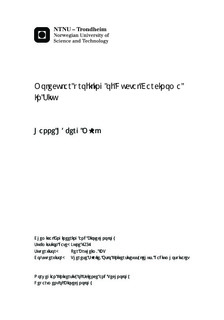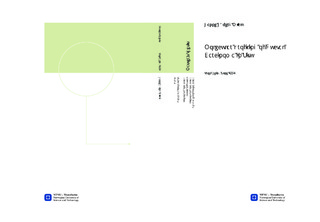| dc.contributor.advisor | Bruheim, Per | nb_NO |
| dc.contributor.advisor | Sørlie, Therese | nb_NO |
| dc.contributor.author | Mørk, Hanne Håberg | nb_NO |
| dc.date.accessioned | 2014-12-19T13:15:06Z | |
| dc.date.available | 2014-12-19T13:15:06Z | |
| dc.date.created | 2012-11-10 | nb_NO |
| dc.date.issued | 2012 | nb_NO |
| dc.identifier | 567000 | nb_NO |
| dc.identifier | ntnudaim:6977 | nb_NO |
| dc.identifier.uri | http://hdl.handle.net/11250/245892 | |
| dc.description.abstract | Breast cancer develops through multiple stages from hyperplasia to invasive and finally metastatic disease. Ductal carcinoma in situ (DCIS) is an abnormal proliferation of epithelial cells within the milk ducts in the breast without invasion beyond the basement membrane. The incidence of DCIS accounts for about 20-25% of newly diagnosed breast cancer cases. Some in situ lesions are believed to rapidly transit to invasive ductal carcinoma (IDC), while others remain unchanged or disappear. Nowadays, women who would never experience invasive breast cancer are undergoing unnecessary and potentially harmful treatment. Studies have revealed that the invasive phenotype of breast cancer is determined at the preinvasive stages of the tumor. Molecular studies of DCIS are therefore important in order to identify those lesions that have a greater risk of developing into invasive disease. The objective of this thesis was to characterize in situ and invasive breast carcinomas by gene expression profiling. Differences in gene expression within DCIS and between DCIS and invasive breast carcinomas were examined to gain insights about molecular mechanisms underlying tumor progression and to identify potential progression markers. 58 tumor tissues from 37 pure DCIS and 21 pure invasive cancers were subjected to microarray gene expression analysis using Agilent One-Color Microarray 8times 60K. Hierarchical clustering proved that the samples related more to subtype than diagnosis. The most significant genes separating the invasive cancers from DCIS were found to be involved in functions related to the extracellular matrix and tumor-stromal interaction. A subgroup of eight DCIS tumors separated from the other DCIS by high expression of genes characteristic of the invasive tumors. These genes could be potential progression markers if validated in other studies. Heterogeneity was observed among the DCIS patients and two subgroups of in situ lesions were clearly differentiated based on upregulated immune response. Elevated levels of immune signaling were found in HER2+, basal-like, normal-like and luminal B subtypes, but were completely absent in luminal A tumors. The suppressing role of the immune system compared with the promoting role needs to be further investigated, and could potentially increase our knowledge concerning the progression of in situ lesions to invasive breast cancer. | nb_NO |
| dc.language | eng | nb_NO |
| dc.publisher | Institutt for bioteknologi | nb_NO |
| dc.subject | ntnudaim:6977 | no_NO |
| dc.subject | MTKJ Industriell kjemi og bioteknologi | no_NO |
| dc.subject | Bioteknologi | no_NO |
| dc.title | Molecular profiling of Ductal Carcinoma In Situ | nb_NO |
| dc.type | Master thesis | nb_NO |
| dc.source.pagenumber | 70 | nb_NO |
| dc.contributor.department | Norges teknisk-naturvitenskapelige universitet, Fakultet for naturvitenskap og teknologi, Institutt for bioteknologi | nb_NO |

